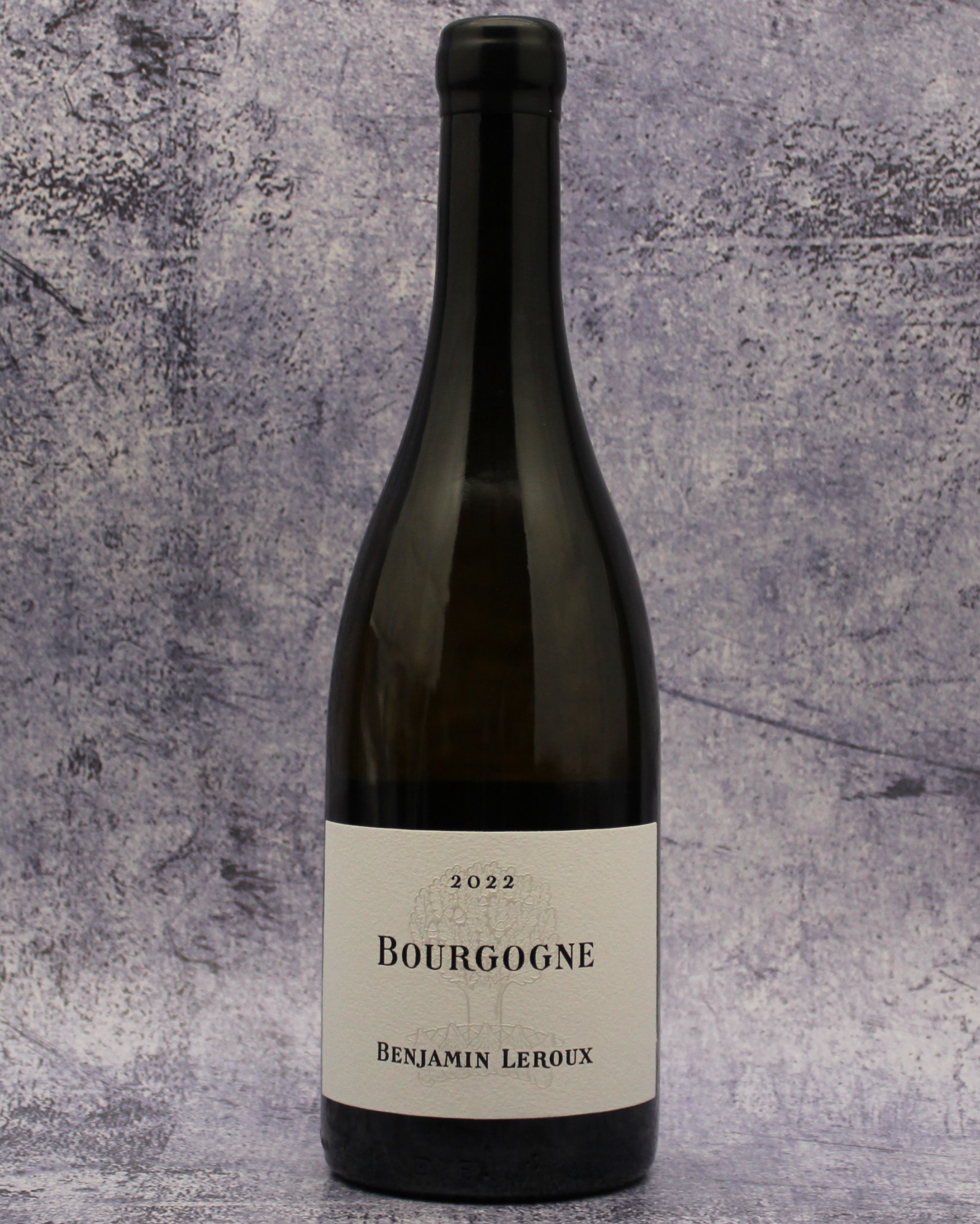From: Burgundy, France
Varietal: Chardonnay
About this wine. This bottling is a blend of various vineyards that often include sites in Meursault and Puligny. Vines age from 29-89 years. The grapes are direct-pressed whole-cluster and aged in mostly used oak foudres and barrel for 12 months. Low sulphur at bottling.
Taste & Critical Acclaim: Delicious. As of November 2024, this gorgeous white wine starts reductive and racy. It has a rich opening, with some slight hazelnut inflections, toasted toffee, marzipan, lemon, mandarin citrus, and a wee bit of grapefruit. Quince and stone fruit—nectarine/peach (flesh and pit), pear, apple blossom, and lifted aromatics follow. Initially, the palate leans toward white peach and pear—a distinctive combination of ripe stone and orchard fruit that’s beautifully balanced. Citrus comes in on the palate, both at the front and end. Once this wine gets some air, white peach and pear aromas come to the forefront, along with a slightly honeyed quince note. The palate continues to come across as pretty racy and successfully balanced, with a citrus and saline bent on its juicy, lifted finish. - E. Lyman, Champion Wine Cellars, November 2024.
Currently in tank, being fined in preparation for bottling. Pale colour with a reductive note. A plentiful exuberant juicy fruit, with some fresh citrus behind. Racy finish, this will be delicious to gulp down. Drink from 2024-2027. - Jasper Morris, MW, tasted October 2023.
Pairing: You’ve got many options here, but I’d go with poultry, pork, or mushrooms as the main focus of the pairing. For seafood, lean into slightly more decadent dishes featuring lobster or incorporating elements of ginger or garlic, like ginger-garlic shrimp with coconut milk or the classic shrimp scampi. Some specific ideas include serving this with spice-rubbed spatchcocked chicken, chicken au Poivre (check it out below), creamy polenta and mushrooms, chicken with mixed mushrooms and cream, and even a pork satay with Thai spices and peanut sauce.
Chicken au Poivre
By Kay Chun
Published Sept. 11, 2024
Domaine Profile by Vicki Denig and Becky Wasserman & Co, 2021.
At a Glance
Location: Beaune, Côte de Beaune, Burgundy
History: Ben was born in 1975 in Beaune, not to a vigneron family, yet decided in his teens that wine was what he wanted to do. After his enology studies, he worked at Cos d'Estournel in Bordeaux, Domaine Drouhin in Oregon, Louis Jadot in Beaune, and Comte Armand in Pommard, where he was named technical director and manager at the age of 24. In 2007, he founded his own domaine and négoce.
Size: Domaine: 8 ha (19.77 ac); Grape purchases: 20 ha (49.42 ac)
Varieties: Pinot Noir, Chardonnay, Aligoté
Farming: Domaine: certified organic, practicing biodynamic; Grape Purchases: Sustainable, organic, and biodynamic
White Winemaking: Uncrushed whole-cluster pressing; ambient yeast fermentation in tank, barrels or foudres; ageing for 12 to 22 months; fining is not systematic; filtration is avoided; bottled since 2019 with Diam corks and 50 to 70ppm total sulfur.
Red Winemaking: Up to 30% whole cluster depending on vintage and cuvée; ambient yeast fermentation; pumpovers in the beginning, punch downs towards the end, 3 to 5 on average; post fermentation maceration; aged in foudres or barrels, maximum 30% new oak; rarely fined or filtered; natural cork closures; 40 to 50ppm sulfur at bottling.
One of the wonderful aspects of Domaine du Comte Armand, is the family’s habit since 1985 of placing their trust in surprisingly youthful talent. Their instincts have been remarkable. Between Pascal Marchand and Paul Zinetti was Benjamin Leroux, who was handed the reins of the domaine in 1999, at the age of 24.
Ben stayed at Comte Armand for fifteen vintages and started his own side project in 2007. Though there are no family vineyards, he now vinifies approximately 30 hectares, 8 of which are domaine holdings that are farmed organically and biodynamically.
His range of appellations is astounding. It spans the Côte from Chassagne-Montrachet to Gevrey-Chambertin, and includes all levels in Burgundy’s hierarchy. Particular favorites of ours are his collection of premier crus, not only because many of them are the most prized, but sometimes precisely because of the opposite. Take Blagny. Right? Yet, with its high altitude and white marl soils, it produces reds and whites with such rebellious minerality and freshness they regularly steal the show.
Blagny is a good metaphor for Ben. Though he has become one of the most respected classical winemakers of his generation, his underlying unconformity, wit, and humour are why he is also among everyone’s most loved.

